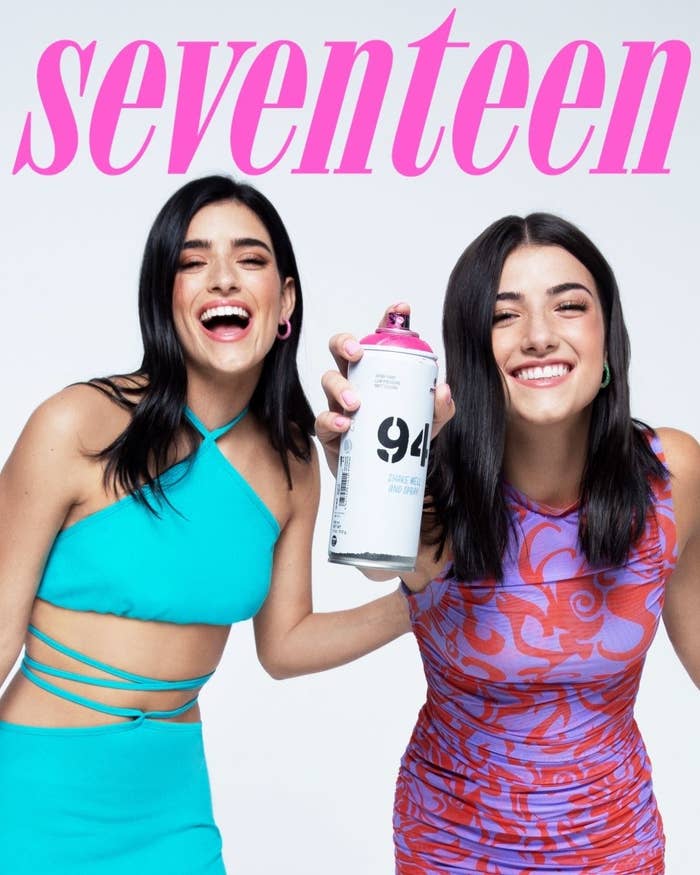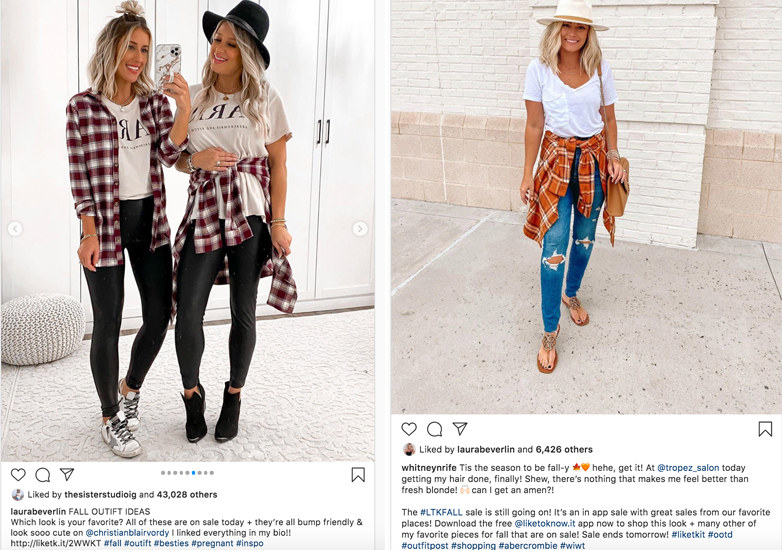This is an excerpt from Please Like Me, BuzzFeed News’ newsletter about how influencers are battling for your attention. You can sign up here.
I want more from these influencer cover stories.

This week I got a press blast from Seventeen’s publisher about mega TikTok sisters Charli and Dixie D’Amelio appearing on the magazine’s digital cover. This is a big deal for the sister and other young influencers. What could be more validating than a legacy women’s publication — that they probably grew up reading — giving them the same royal treatment as traditional celebrities?
In January, Emma Chamberlain made Cosmopolitan’s physical magazine cover, which was so defining for the influencer industry that I covered her press in another media outlet for BuzzFeed News. I had gotten to know Emma’s online personality and YouTube videos pretty well at that point, so I was uniquely interested to learn more about her on a more ~intimate~ level, off camera.
I was just as eager to read the D’Amelio sister feature in Seventeen this week — we know so much about their relatability politics (They’re just like any other teen! But they’re super famous!), and so little about their relationship to fame and their parasocial relationship to fans at a young vulnerable age. The Seventeen cover story is called “Behind the Scenes of Charli and Dixie D’Amelio’s TikTok Empire,” so that was a big sell for me. Let’s pull the curtain on their lives all the way back, Seventeen. I’m readyyyyyy.
Unfortunately, I was left pretty unsatisfied. The whole story read like a well-organized press release. I mean, it was a nice read, as many magazine stories about young celebrities are. But it felt like a series of convenient narratives about tough subject matters strung and tied together with neat little bows. The writer and the D’Amelio sisters addressed important sensitive issues like body-shaming and cyberbullying, but the article only skimmed the surface and had very similar talking points to other media reports. I left the long piece not having learned much more about them “behind the scenes,” or as complicated human subjects, but definitely knowing that they’re expertly media trained.
At just 16 and 19, Charli and Dixie D’Amelio have managed to handle their meteoritic rise — and all the attention and pressure that comes with it — without losing sight of who they are.
…
So how do they deal with the haters? “I have all my comments off so I don’t really get mean ones," Dixie shared. "But I usually just make a joke out of it or ignore it, because it doesn’t matter.”
I can’t imagine the kind of scrutiny these teens face every day. I also can’t imagine it being easy that Dixie simply turns “all [her] comments off” and compartmentalizes just to get through a workday. That takes constant maintenance, and it takes a huge toll on a young person’s mental health. I appreciate Charli’s vulnerability in talking about her eating disorder so that she can help someone else, but I wish she and the writer could have also addressed how damaging it could be for a young woman with an eating disorder to be constantly seen by millions every day. I’d love to know the long-term impacts of keeping up a desirable image and body to keep your thrilling and lucrative influencer job. How radical would it be for a young fan to read about that in a magazine like Seventeen or Cosmo?
The Seventeen feature on the D’Amelio sisters also presents their “meteoric rise” as incidental, and that the family is not “trying too hard to make things happen” when they negotiate major multimillion-dollar business deals. I feel like this does a huge injustice to both the influencer grind and to the D’Amelio family’s success. Even though they may talk about their jobs with an aspirational kind of whimsy (as if their new Morphe makeup line blew in their front door with the wind), to have built the empire that the family has requires a lot of effort (taking countless business meetings and continuously pitching). It also takes a lot of luck — aka being pretty and white. It’s an effort and privilege that we can value, envy, criticize, and/or resent…but I would have loved to see any of that in a cover story.
This is not a takedown of Seventeen’s recent feature. Its story fits the mold we’ve all grown accustomed to accepting from our favorite glossy magazines. Seventeen also skews to a younger audience, so it makes sense it wants to keep it light and fluffy. But, in my opinion, it’s also more of a reason to address the more inconvenient truths (er, sorry to pull an Al Gore) about becoming famous at a young age. This is me asking the legacy women’s magazines that I’ve grown up with to be a little more conscious of how we’re talking about “average teens” (their words) becoming social media stars, and if we should even be calling who they are and their extraordinary lifestyles “average.”
They're not trying too hard to make things happen — and that seems to be part of their magic. "Everyone always asks us what our plans are for the next year. I don’t know even know what my plan is for tomorrow. I just live day by day and I’m excited for everything," Dixie said. So what advice would they give their millions of followers who want to follow in their footsteps? "Be yourself, have fun, make mistakes,” the girls advised.
Seems easy enough, right? And maybe it is, when you have your sister by your side. Because if there's one thing that’s clear from spending a little time inside the D'Amelios' world, it's that together, there’s nothing these sisters can’t do.
Plus, if influencers benefit from being perceived as more ~real~ or independent — at least in the way that traditional celebrities aren’t — here is a great opportunity to ask them to be a little more self-reflective.
I tried the “be yourself” and “have fun” and “make mistakes” mantras the D’Amelio girls advised, and I have not become a megastar for the myriad of social and institutional reasons that I am now asking you to address.
...I am also going to ask fashion influencers to step it up: Tying a flannel around your waist is not fall fashion!

To my dear, beloved Lakelynns and Cayleighs on Instagram: I know fall is your season. You have hundreds of thousands of followers. Fashion is your thing! It’s what you’ve built your brand on, and what drives big commission dollars from your LikeToKnowIt links. I respect that.
You all look very lovely, but I plead! Please give us another kind of look for fall fashion. I implore you to reimagine that flannel shirt from beyond your waist. I love basic culture. It prevails because it doesn’t require a lot of imagination or creativity — just hardcore comfort. But this is starting to feel like boring culture. I’m sorry.
Let’s bring in some new patterns and colors and fits. Or, as Stephanie put it, “Ladies, let’s pumpkin-spice it up.”
Thank you. That is all. Actually, one other thing: Influencers, I also implore you to keep up your black-square energy on the lawful injustice of Breonna Taylor’s death.
Until next time,
Tanya
